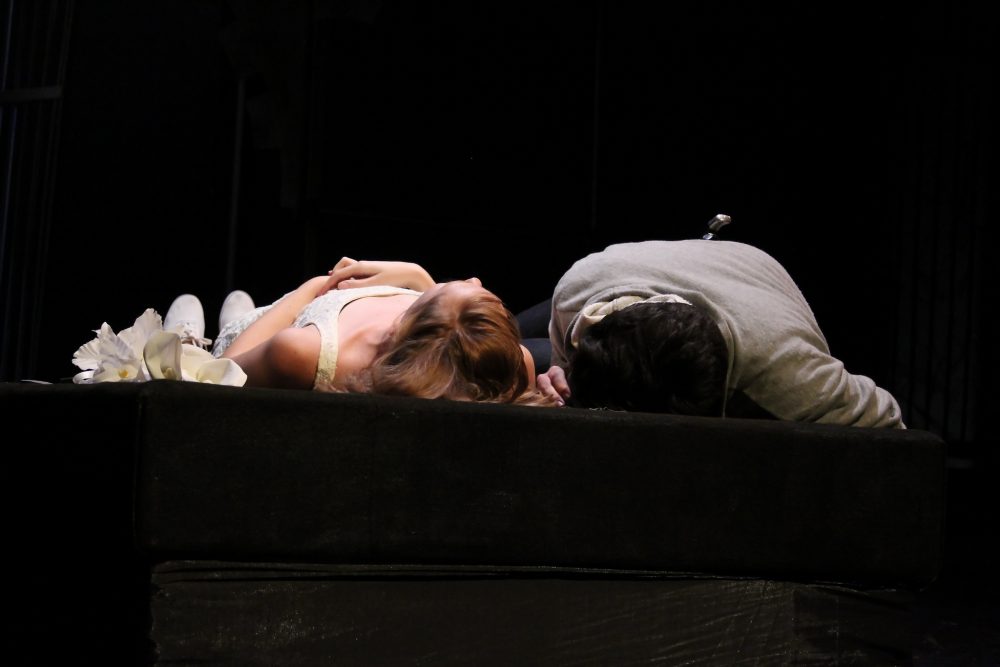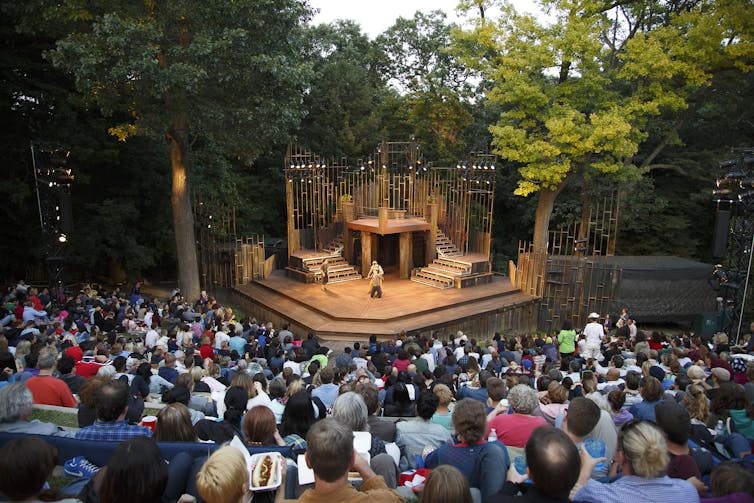This article was originally published on The Conversation and got picked up by the National Post.

The Canadian Stage Company will soon bring us A Midsummer Night’s Dream and Romeo and Juliet as part of their annual Shakespeare in the Park summer offerings in Toronto’s High Park. It will be interesting to see how director Frank Cox-O’Connell deals with Romeo and Juliet. Like all of Shakespeare’s plays, Romeo and Juliet is pretty queer. Will the production acknowledge it?
You may be surprised to hear me blithely suggest Shakespeare’s plays are queer. But note the difference between discussing Shakespeare’s sexuality and “queering the text.”
We know little or nothing about Shakespeare’s sexuality and we probably never will.
Any research is obscured by the lack of detail we have about the man from Stratford. (Why, in his will, did he leave his wife his “second best bed?”) In addition, early moderns did not use the terms “homosexual” or “gay.” However, they were opposed to sodomy.
Sodomy, as queer scholar Jonathan Goldberg tells us, included “any sexual act … that does not promote the aim of married procreative sex — anal intercourse, fellatio, masturbation, bestiality.”
Shakespeare may or may not have committed sodomitical acts. It’s tough to say, if only because sodomy covers a lot of territory. (Oral sex— categorized as sodomy — is still illegal in some American states, although the law was made unenforceable (as late as 2003!)
Shakesqueer?
Leaving the complex notion of Shakespeare’s sexuality aside, what about queering his plays? University of British Columbia professor Stephen Guy-Bray suggests that any queer person can find a “space” for themselves in a text.
Taking Guy-Bray’s cue, several essay collections have recently appeared that feature queer critics who read themselves into Shakespeare’s texts: Queer Shakespeare Desire and Sexuality, edited by Goran Stanivukovic; Shakesqueer: A Queer Companion to the Complete Works of Shakespeare, edited by Madhavi Menon; and The Queer Shakespeare, edited by Clayton Kinnelon Greiman.
Romeo’s masculinity
Romeo and Juliet is filled with dirty jokes.
For example, a young soldier named Sampson speaks of both himself and his sword as an erection: “I am a pretty piece of flesh,” he says. Later, he adds, “my naked weapon is out.”
Vanessa Cunningham tells us that these phallic references were edited out of Romeo and Juliet for productions in the 18th century by renowned Shakespeare thespian David Garrick, who called them “quibbles.”
Cunningham mentions that Garrick defined a quibble as “low conceit depending on the sound of words; a pun.” Thus 830 lines from the play were deleted.
In many modern productions, the unfortunate result of trying to deal with these double entendres is a lot of crotch-grabbing so that the audience doesn’t miss the point.
But it might better serve Shakespeare’s text if this word play were examined in historical context. Masculinity was an important issue for early modern audiences, who were so threatened by women’s sexuality as to not allow women to appear on stage.

The fear was that women’s sexual power was so strong that it might overwhelm men and “unman” them. As English scholar Ben Saunders says: “In the Renaissance, the love that dare not speak its name is not homosexuality, but rather any love that dares to posit a woman as worthy of a man’s complete devotion.”
In Romeo and Juliet, Romeo is constantly harassed by the other young men because they see his sexuality under threat due to his overpowering love for Juliet. Romeo speaks in the language of euphuistic paradox, borrowed from John Lyly’s novel, Euphues, about a young Italianate (read: effeminate and possibly sodomitical) man who is subsumed by his love for women: “Oh heavy lightness! serious vanity!”
When Mercutio compares Romeo and Tybalt, he contrasts the new dandified brand of young man (Romeo) to the old-style fierce fighter (Tybalt). Tybalt is described as “the very butcher of a silk button” and “the pox of antic, lisping, affecting, fantasticoes.”
And then there’s Hamlet
English essayist T.S. Eliot thought that Hamlet had a problem that Shakespeare would barely identify — and Eliot could barely mention — and that it ruined the play. Perhaps it was a crisis of masculinity in a man who is unable to act? Hamlet often characterizes himself as more like a boy or a woman than a man.
“Am I a coward? Who calls me a villain? Breaks my pate across? Plucks off my beard and blows it in my face?”
Hamlet also criticizes himself for his lack of action and obsession with talk by comparing himself to a female prostitute:
“Must I like a whore unpack my heart with words and fall a-cursing like a very drab, a stallion!”
Shakespeare could not be any clearer that Hamlet is emasculated by his own lack of action. Near the end of the play, once again, Hamlet compares his misgivings about the upcoming duel with Laertes as womanish: “It is but foolery, but it is such a kind of gainsgiving as would perhaps trouble a woman.”
All of Shakespeare’s tragic heroes experience a major crisis with masculinity as a contributing factor to their downfall. Antony and Cleopatra is literally about the undoing of Antony by his love for Cleopatra, and Macbeth is outmanned by his aggressive and evil wife.
And then there’s Othello who loves “not wisely but too well.” King Lear ends up by undoing his own patriarchy, naked, on the heath, and even the uber-warrior Coriolanus is outmanned by his archival Aufidius, who in the end, calls him a boy:
Coriolanus. Hear’st thou mars?
Aufidius. Name not God, thou boy of Tears.
Where does that leave us?
None of this means Shakespeare was gay. It does mean that Shakespeare was deeply concerned with masculinity and femininity, and with the gender roles played by men and women.
His plays are often about kings and their problems. But if you examine the work closely, you will find many very strong women controlling the men (if only through male desire for them).
You will also find kings who seem schooled in 20th century queer theory. In other words, these monarchs seem to be aware that acting masculine is a role that goes along with being male — and that it is difficult sometimes to live up to the part. What does this have to do with being gay?
Not all gay men are effeminate, but what our culture has to offer straight culture is the possibility of looking at societal norms in a different way, and that’s what Shakespeare offers us too.
What will Romeo be up to in Toronto’s High Park this summer? Will there be a lot of crotch-grabbing, or is there a possibility of seeing him in a full-fledged crisis of masculinity?
![]() We’ll see.
We’ll see.